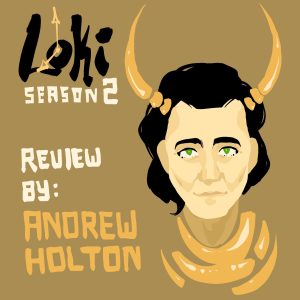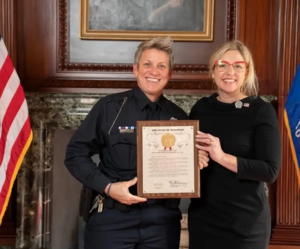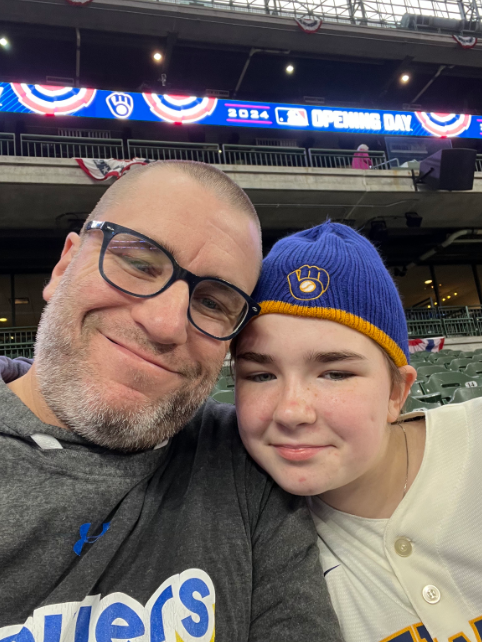News Explained: Dobbs V. Jackson Women’s Health Clinic

via The Washington Post
May 9, 2022
News Explained: The Possible Overturn of Roe V. Wade
On May 2nd the Supreme Court draft opinion on Dobbs V. Jackson Women’s Health Clinic was leaked. This opinion, if issued, would overturn the decisions made in the landmark 1973 case Roe V. Wade and the 1992 Planned Parenthood V. Casey, which protected the right to access abortion under the Constitution.
Without this precedent, abortion in most circumstances would become illegal in more than twenty states due to “trigger laws” which would revert abortion access back to how it was before Roe.
The draft was leaked by Politico, significant not only for its contents, but for the breach of trust and security within the court that allowed this leak to occur.
The court is set to issue their opinion on Dobbs in June. Although some celebrate, a great number of Americans worry over the potential damage once a common medical service that has been constitutionally protected for nearly half a century becomes outlawed in almost half the country.
Here are 10 things a student should know about Dobbs V. Jackson Women’s Health Clinic and the potential overturn of Roe V. Wade according to Tosa West Social Studies Teacher Chad Mateske:
1) By 1910 abortion was not only restricted but outright illegal at every stage of pregnancy in every state These bans had some exception in order to save the mother’s life.
2) In 1965 the US Supreme Court decided the case of Griswold v Connecticut which found a Connecticut law which banned the use of drugs, medical devices and any other instrument in furthering contraception to be unconstitutional. The argument found that the law violated marital privacy protected within the penumbras or zones of the Constitution such as the 1st, 3rd, 4th, 9th and 14th amendments. This case recognized the concept of individual autonomy and upheld the right of individuals to make personal decisions in which the government shouldn’t be able to interfere.
3) Between 1967 and 1973, four states – Alaska, Hawaii, New York and Washington- repealed their abortion bans entirely, while 13 others enacted reforms that expanded exceptions. Instead of allowing for abortion to save the patient’s life, they now allowed it in instances where a pregnancy was dangerous for the physical or mental health of a patient, fetal abnormalities, and when the pregnancy resulted from rape or incest.
4) In 1973 the US Supreme Court decided the case of Roe v Wade which found a Texas state law that made abortion illegal except by a doctor’s orders to save a woman’s life to be unconstitutional. In a 7-2 decision the court ruled in favor of Jane Doe suggesting that inherent in the Due Process clause of the 14th amendment is a fundamental right to privacy through the idea of Substantive Due Process. However the right is balanced against the government’s interest in protecting women’s health and protecting “the potentiality of human life” in regards to the fetus. The court recognized the 14th amendment protects against state action the right to privacy of which women’s right to choose to have an abortion falls within this right. The case set up a trimester time frame for which in the 1st trimester the state may not regulate the abortion decision, in the second trimester the state may impose regulations that are reasonably related to maternal health and the third trimester a state may regulate abortions or prohibit them entirely so long as their are exceptions for the life or health of the mother. The court relied upon the precedent of personal autonomy and privacy protections established in Griswold in coming to their decision.
5) In 1992 the US Supreme Court decided the case of Planned Parenthood v Casey which upheld the right to abortion but created a new standard of examining if a law created an “undue burden” test. This made it more difficult to challenge laws that were less than absolute prohibitions on abortion. This led to many states passing many restrictions on abortion which many courts have found to not violate the “undue burden” test.
6) In 2007 the US Supreme Court decided the case of Gonzales v Carhart and Gonzales v Planned Parenthood which upheld a federal law allowing Congress to ban certain second trimester abortion procedures. Rolling back 30 years of abortion right protections.
7) In December of 2021, the US Supreme Court heard oral arguments in the case Dobbs v Jackson Women’s Health Organization. The case took an unprecedented turn last week when a leaked draft of the Supreme Court’s opinion was released by Politico. The Supreme Court confirmed that the draft by Associate Justice Samuel Alito was authentic creating a frenzy of what this could mean for abortion rights. The brief suggests that the original decision on Roe was improperly decided and as such the Dobbs decision could mark a complete overturn of the 1973 Roe v Wade decision. The initial vote seemed to sit at 5-4 with Chief Justice John Roberts voting with the liberal leaning justices.
8) It is important to note that while the draft may be authentic, it is just a draft at this time and doesn’t serve as the final opinion of the court. Opinions go through several changes and shifts throughout the process of writing them as do the votes that Justices may offer towards the final version of the opinion. If stances are added that conflict with how each Justice reads the meanings of the Constitution, they may alter their votes leading up to the final vote count. However, considering that we are into May and the final opinions will most likely come out by the end of June, there is a strong chance that not much may change from the leaked version.
9) What does this all mean? It could mean that if the current leaked draft of the majority opinion is what stands in the end, that Roe v Wade would be overturned and that under the concept of federalism states would be left to establish their own laws relating to abortion. In fact, 13 states have “trigger laws” on the books that would kick in as soon as Roe were ever overturned. Many other states are prepared to pass restrictive legislation upon the case being decided. This also doesn’t preclude Congress from looking to pass a Federal law that addresses abortion but under the current Congress and President that doesn’t seem likely at this time. Some do worry that this may lead to unsafe abortion practices that may come back around which could impact women still looking to have abortions as well as the argument that government is legislating what a women does with her body. On the other hand, many are happy if this comes to fruition as they feel the unborn fetus has been being denied rights since 1973 as well as feeling this better aligns with moral and religious convictions.
10) There are some who wonder what the next battle ground will be under the current makeup of the court with many speculating that a challenge to Obergafel v Hodges, the case which recognized same sex marriage as legal could be the next shoe to drop. There has been a greater leaning in recent years towards religious convictions and free speech being protected at a greater rate when compared to equal protection claims of same sex couples through decisions like the Masterpiece Cakeshop decision (baker’s right to not have compelled speech against their moral convictions as it related to a same sex cake request) and the Fulton v Philadelphia decision (Catholic Social Services was protected for their practice of refusing to consider LGBTQ couples for adoption placements and thus it was unconstitutional for the city of Philadelphia to deny the religious organization a contract renewal required to operate in the city).
Resources for Further Research:
Where Does the Anti-Abortion Movement Go After Roe?
How the Supreme Court went from cementing abortion rights in Roe v. Wade to drafting their demise
Explaining leaked Roe v. Wade opinion: What could happen next?
Kathryn Kolbert: The end of Roe v. Wade — and what comes next | TED
The Daily: The Story of Roe v. Wade, Part 1: Who Was Jane Roe?















